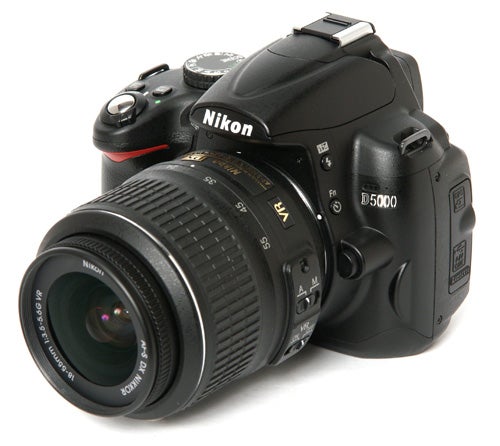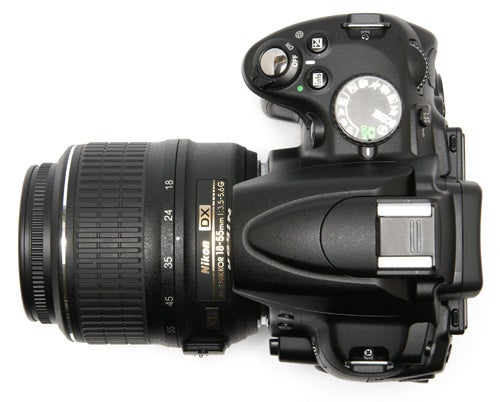Nikon D5000 Digital SLR Review - Nikon D5000 Digital SLR Review
Nikon D5000 Digital SLR
The D5000 is Nikon’s new advanced consumer DSLR, and it’s loaded with features.

Sections
- Page 1 Nikon D5000 Digital SLR Review
- Page 2 Nikon D5000 Digital SLR Review
- Page 3 Nikon D5000 Digital SLR Review
- Page 4 Nikon D5000 Digital SLR Review
- Page 5 Features Table Review
- Page 6 Test Shots – ISO Performance Review
- Page 7 Test Shots – Detail and Lens Performance Review
- Page 8 Test Shots – Exposure Evaluation Review
It’s the D5000’s performance that really sets it apart from the entry level toys. It starts up almost instantly, and like all the best cameras it can take a picture within a fraction of a second of flicking the switch. In single-shot mode it can take pictures as fast as you can press the shutter button. In continuous shooting mode it can manage over 4fps in JPEG Fine mode, although it does start to slow down after approximately 30 shots. In Raw mode it’s a fraction slower, and the buffer fills up after approximately 14 shots. The speed with which it empties again is very dependent on the speed of the memory card being used, although it doesn’t appear to see class 10 cards as any faster than class 6.
The movie quality is very good, and there’s no doubt that shooting video through a high quality Nikon lens does produce some very nice results, but the hit-or-miss sound quality and lack of autofocus limit its usefulness.
A number of reviewers have raved about the D5000’s image quality, but to be honest I wasn’t overly impressed by it. Don’t get me wrong, there’s no problem, it’s just not significantly better than any other mid-level APS-C DSLR that I’ve tried recently, such as the Sony Alpha A330 or even the Olympus Pen E-P1. The D5000 can certainly take a nice photo, and there’s no doubt that the new AF-S 18-55mm f/3.5-5.6G lens is utterly fantastic, producing corner-to-corner sharpness with no distortion or chromatic aberration at any focal length.
The Active D-Lighting system is excellent, effectively increasing the dynamic range by about one stop under and two over, and it wasn’t at all bad to start with. As a result the D5000 produces pictures with rich well-saturated colours that still have detail even in the brightest areas. In fact they look a lot like they were shot on colour slide film.
The only real problems I found with the D5000 were somewhat inconsistent light metering, varying by as much as 1EV on consecutive shots of the same scene, and significant noise at ISO settings of 800 and above, at least when using the default settings. High ISO nose control is adjustable via the main menu, but to get anything approaching acceptable image quality at 1600 ISO it has to set to maximum. 3200 ISO is pretty rope even so.
”’Verdict”’
The Nikon D5000 is a well made and well equipped mid-level camera ideal for those upgrading from an entry-level DSLR and looking for more features. Performance and handling are excellent, autofocus is quick and reliable, and image quality is very good under most circumstances. Video mode has no AF and the monitor opens the wrong way, but other than that it’s a good little camera.

